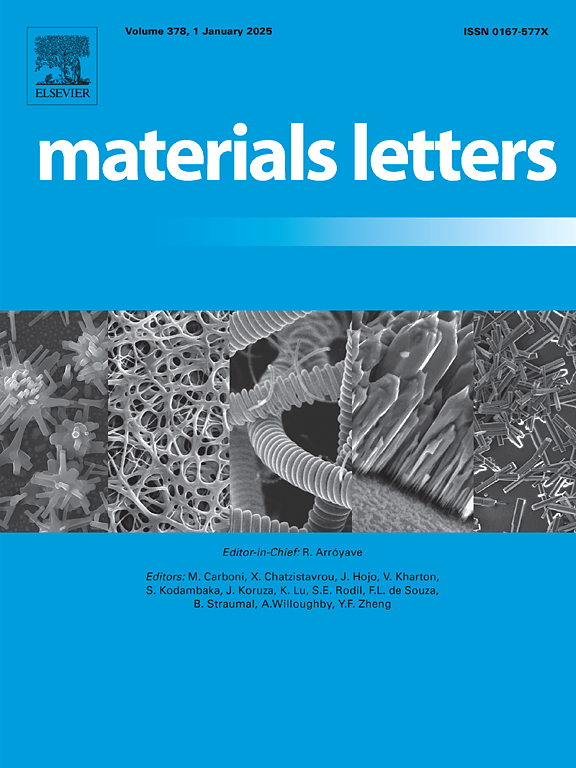钠离子电池用不同前驱体碳纤维硬炭的微观结构及电化学行为研究
IF 2.7
4区 材料科学
Q3 MATERIALS SCIENCE, MULTIDISCIPLINARY
引用次数: 0
摘要
首次对聚丙烯腈纤维(PANCFs)、中间相沥青纤维(mpcf)和人造丝纤维(rcf)制备的三种特殊硬碳(hc)的微观结构和储钠行为进行了比较研究。结果表明,基于mpcf的HC结晶度最高,而基于pancf的HC和基于rcf的HC的无定形程度和缺陷含量依次升高。此外,rcf基HC具有最丰富的氧官能团。电化学性能评价表明,基于rcf的HC在0.1 V以下表现出较长的平台特性,获得了310.8 mAh g−1的最高可逆容量和良好的循环稳定性(200次循环后98.9%)。本研究为碳纤维基碳化物在钠离子电池中的应用提供了有益的尝试。本文章由计算机程序翻译,如有差异,请以英文原文为准。
Microstructure and electrochemical behavior investigation of carbon fiber hard carbons derived from different precursors for sodium-ion batteries
A comparative study of the microstructure and sodium storage behaviors of three special hard carbons (HCs) derived from polyacrylonitrile fibers (PANCFs), mesophase pitch fibers (MPCFs) and rayon fibers (RCFs) are carried out for the first time. The results reveal that the MPCF-based HC presents the highest crystallinity, while the amorphous degree and defect contents rise in sequence for the PANCF-based HC and RCF-based HC. Moreover, the RCF-based HC has the richest oxygen functional groups. The electrochemical performance evaluation indicates that the RCF-based HC exhibits much prolonged plateau characteristic below 0.1 V, reaping the highest reversible capacity of 310.8 mAh g−1 and excellent cycling stability (98.9 % after 200 cycles). This study provides a rewarding attempt for the exploitation of carbon fiber-based HCs in sodium-ion batteries.
求助全文
通过发布文献求助,成功后即可免费获取论文全文。
去求助
来源期刊

Materials Letters
工程技术-材料科学:综合
CiteScore
5.60
自引率
3.30%
发文量
1948
审稿时长
50 days
期刊介绍:
Materials Letters has an open access mirror journal Materials Letters: X, sharing the same aims and scope, editorial team, submission system and rigorous peer review.
Materials Letters is dedicated to publishing novel, cutting edge reports of broad interest to the materials community. The journal provides a forum for materials scientists and engineers, physicists, and chemists to rapidly communicate on the most important topics in the field of materials.
Contributions include, but are not limited to, a variety of topics such as:
• Materials - Metals and alloys, amorphous solids, ceramics, composites, polymers, semiconductors
• Applications - Structural, opto-electronic, magnetic, medical, MEMS, sensors, smart
• Characterization - Analytical, microscopy, scanning probes, nanoscopic, optical, electrical, magnetic, acoustic, spectroscopic, diffraction
• Novel Materials - Micro and nanostructures (nanowires, nanotubes, nanoparticles), nanocomposites, thin films, superlattices, quantum dots.
• Processing - Crystal growth, thin film processing, sol-gel processing, mechanical processing, assembly, nanocrystalline processing.
• Properties - Mechanical, magnetic, optical, electrical, ferroelectric, thermal, interfacial, transport, thermodynamic
• Synthesis - Quenching, solid state, solidification, solution synthesis, vapor deposition, high pressure, explosive
 求助内容:
求助内容: 应助结果提醒方式:
应助结果提醒方式:


